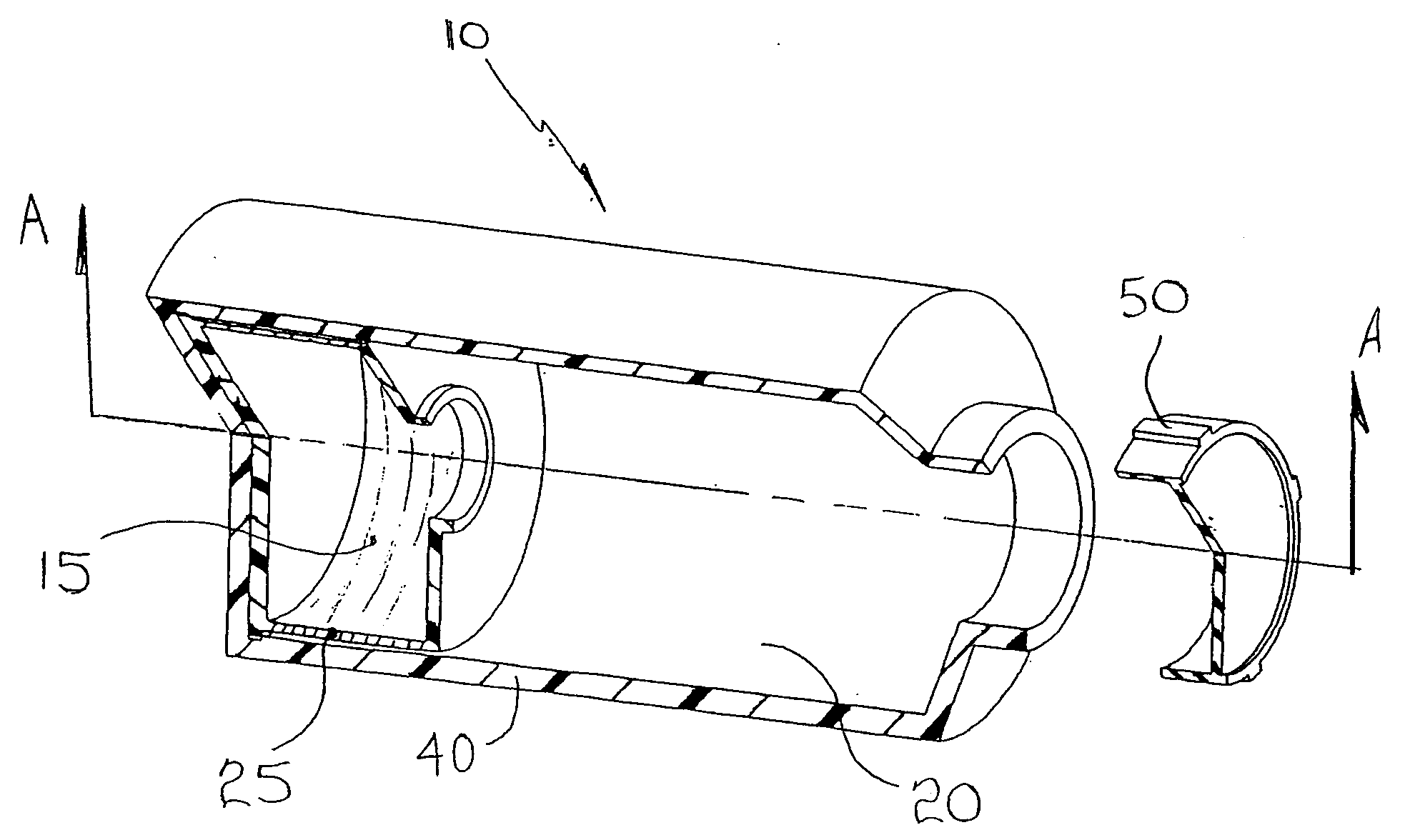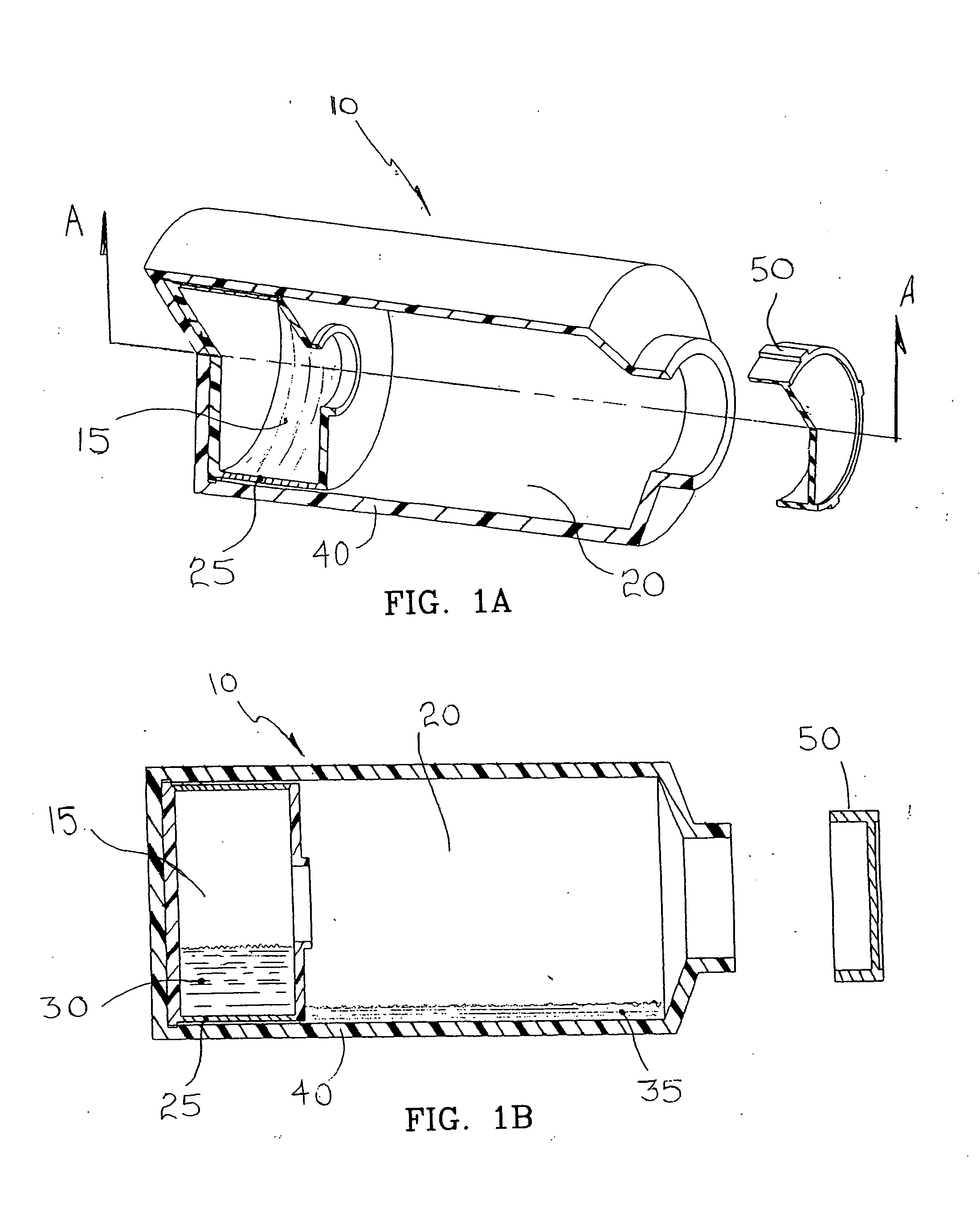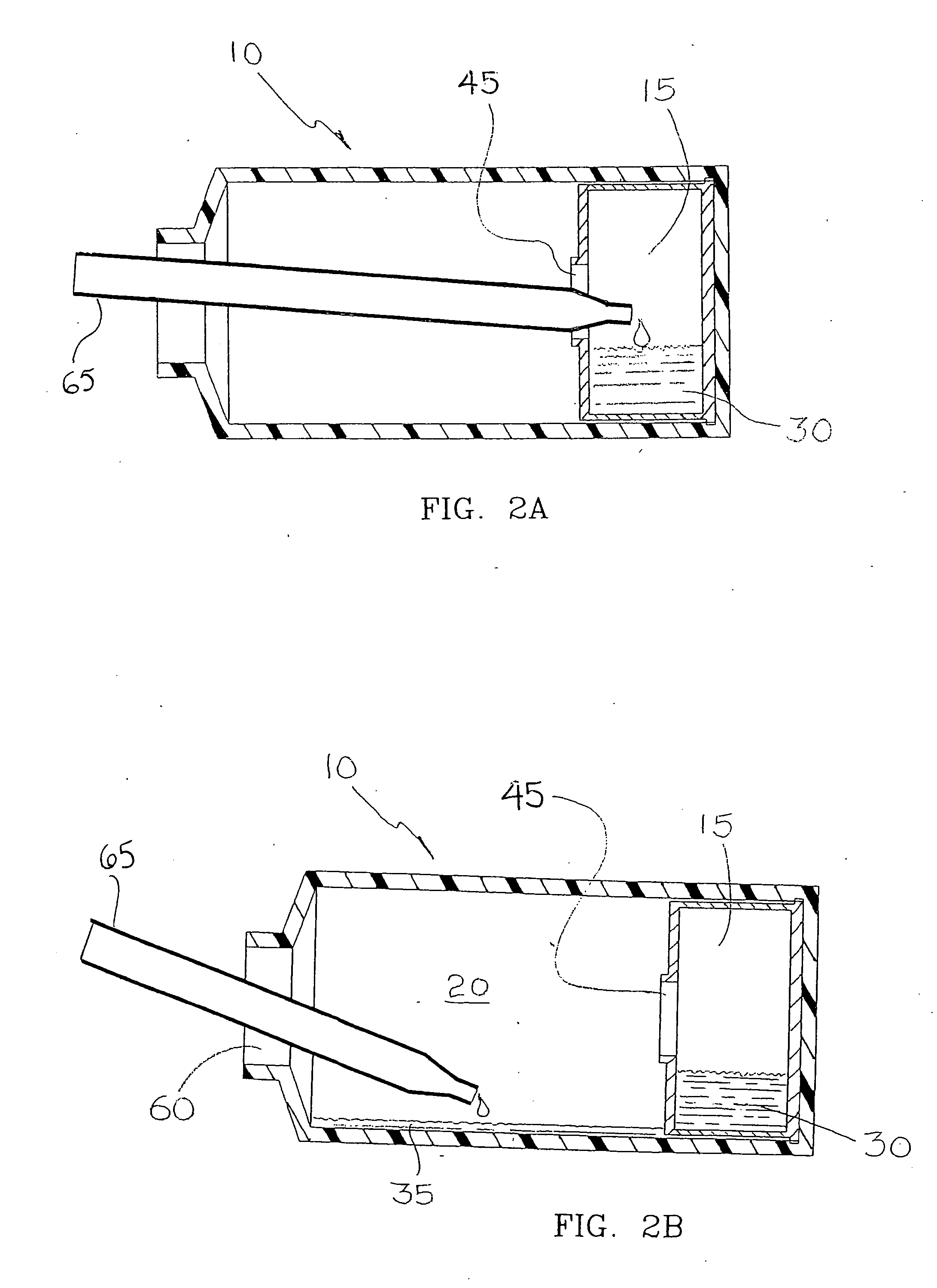Compartmentalized device for cell culture, cell processing, and sample dialysis
a technology of cell culture and dialysis sample, which is applied in the field of cell culture and cell processing devices, can solve the problems of limiting efficiency and usefulness, large device footprint, and inefficient use of incubator space by devices with large footprints, and achieves the effect of more efficient dialysis of laboratory samples
- Summary
- Abstract
- Description
- Claims
- Application Information
AI Technical Summary
Benefits of technology
Problems solved by technology
Method used
Image
Examples
example 1
Evaluation of the Compartmentalized Device With Adherent Cells for Increased Cell Density and Reduction of Serum Use
[0068] Compartmentalized device test fixtures 500 were configured as shown in FIG. 14. The device housing was created by modifying a Corning® 850 cm2 roller bottle. The bottom of the bottle was removed to form device housing 540. Basal medium compartment 515 was placed in the distal end of device housing 540 as shown. Device bottom 541 was attached in a liquid tight manner, thereby completing the assembly procedure and creating a liquid tight cell culture compartment 520. Semi-permeable membrane 525 consisted of a 14,000 MWCO cellulose membrane 1.0 inch long and 4.4 inches in diameter, creating a semi-permeable membrane surface area of 89 cm1. Semi-permeable membrane 525 was constrained from expanding by mesh 530, comprised of 0.020 inch diameter polypropylene strands at 16 strands per inch. The inside surface area of device housing 540 available for cell attachment ...
example 2
Evaluation of the Compartmentalized Device with Suspension Cells for Increased Antibody Density and Reduction of Serum Use
[0074] Four gamma-irradiated compartmentalized device test fixtures 500 were constructed as previously described in Example 1, and shown in FIG. 14. Tests were conducted to evaluate the ability of the compartmentalized device test fixtures to increase the density of secreted antibody, the amount of secreted antibody, and reduce serum relative to traditional roller bottles.
[0075] 22×106 murine hybridoma cells secreting IgG monoclonal antibody were suspended in 25 ml of medium and were inoculated into each cell culture compartment 520, and 75 ml of medium was placed into each basal medium compartment 515. 22×106 murine hybridoma cells secreting IgG monoclonal antibody were suspended in 100 ml of medium and were inoculated into traditional Corning® 490 cm2 roller bottle controls. Glucose consumption was monitored daily. FBS serum concentration was 10% for the tra...
example 3
Evaluation of the Compartmentalized Device With Suspension Cells for Increased Cell Density
[0078] Compartmentalized test devices were configured as shown in FIG. 14 with the exception that mesh 530 was not present. Semi-permeable membrane 525, was unconstrained, and in operation expanded from swelling to make contact with device housing 540. Device housing 540 extended approximately seven inches between basal medium compartment 515 and access port 535, generating a device housing surface area suitable for cell culture of approximately 600 cm2.
[0079] Two compartmentalized test devices and a T-175 control flask were compared on the basis of cell density. Medium consisted of Hyclone media (cat#SH30382.02) supplemented with 10% Hyclone Fetal Bovine Serum and 1% Gibco Penicillin Streptomycin. Culture conditions were 37C, 95% R.H., and 5% CO2. All devices were rolled at 1 RPM. Each cell culture compartment 520 was inoculated with 25×106 murine hybridoma cells in 25 mls of medium. Each ...
PUM
 Login to View More
Login to View More Abstract
Description
Claims
Application Information
 Login to View More
Login to View More - R&D
- Intellectual Property
- Life Sciences
- Materials
- Tech Scout
- Unparalleled Data Quality
- Higher Quality Content
- 60% Fewer Hallucinations
Browse by: Latest US Patents, China's latest patents, Technical Efficacy Thesaurus, Application Domain, Technology Topic, Popular Technical Reports.
© 2025 PatSnap. All rights reserved.Legal|Privacy policy|Modern Slavery Act Transparency Statement|Sitemap|About US| Contact US: help@patsnap.com



